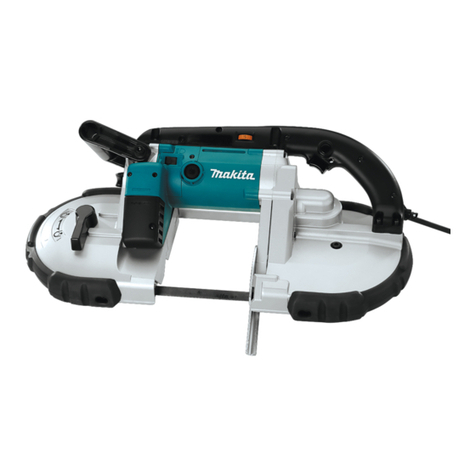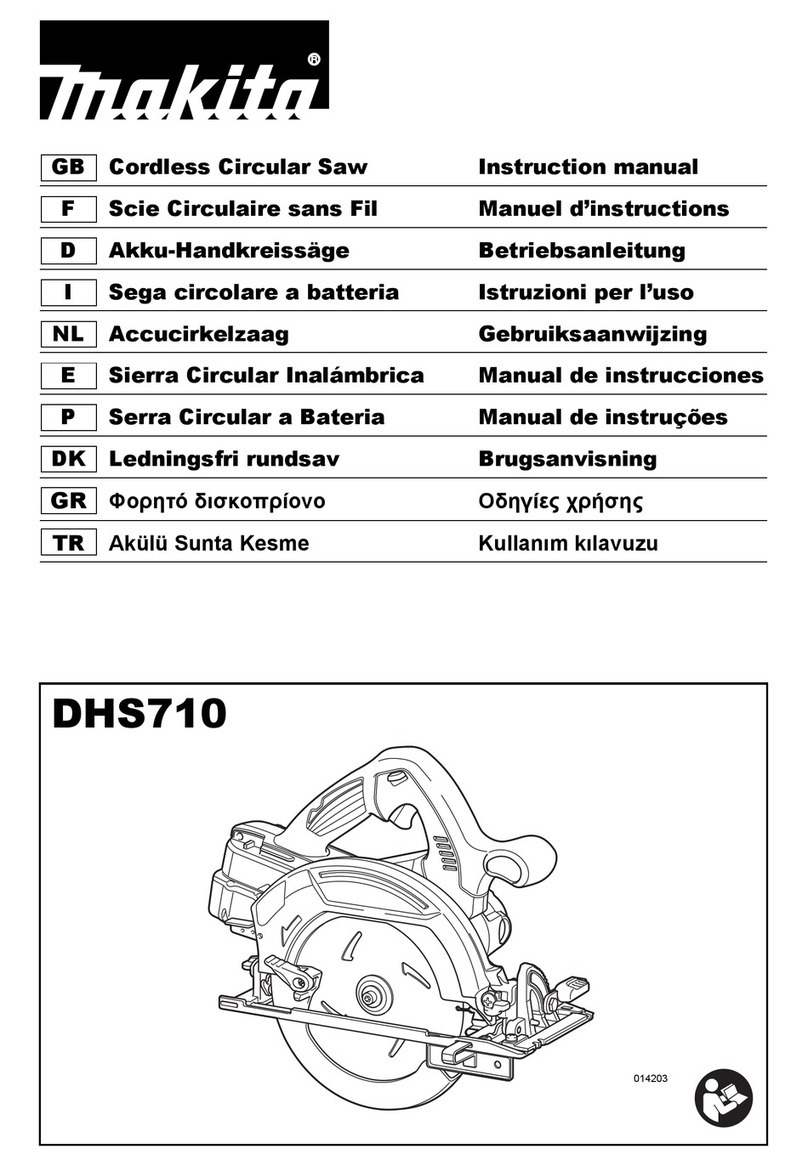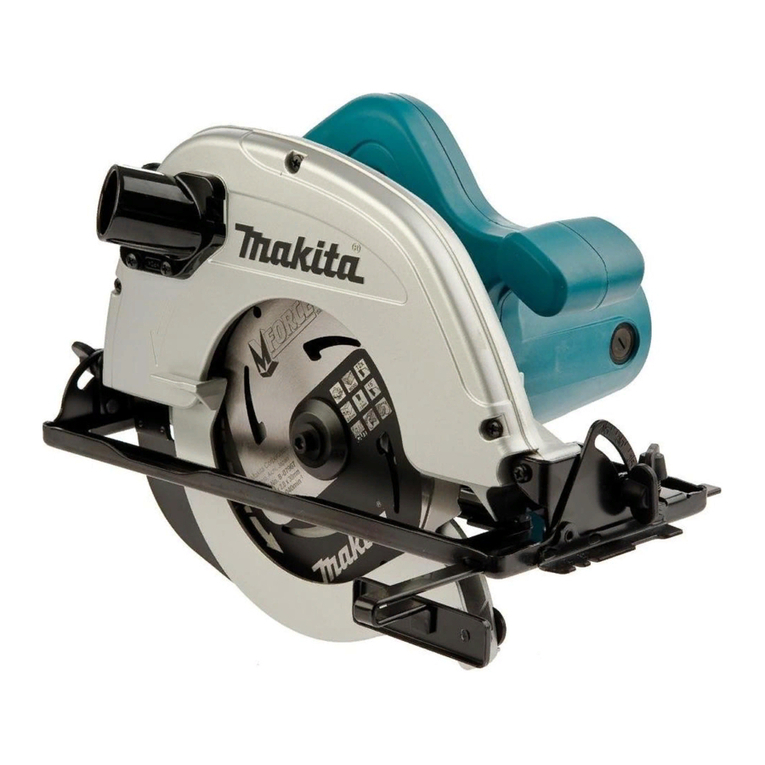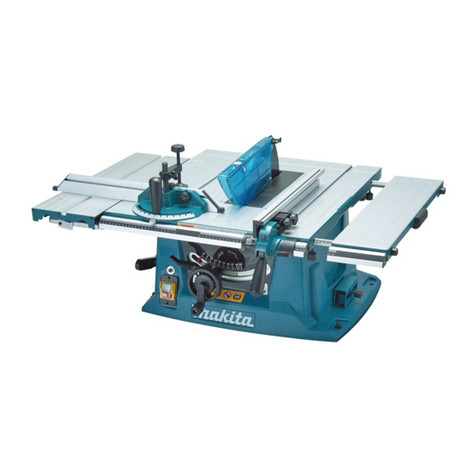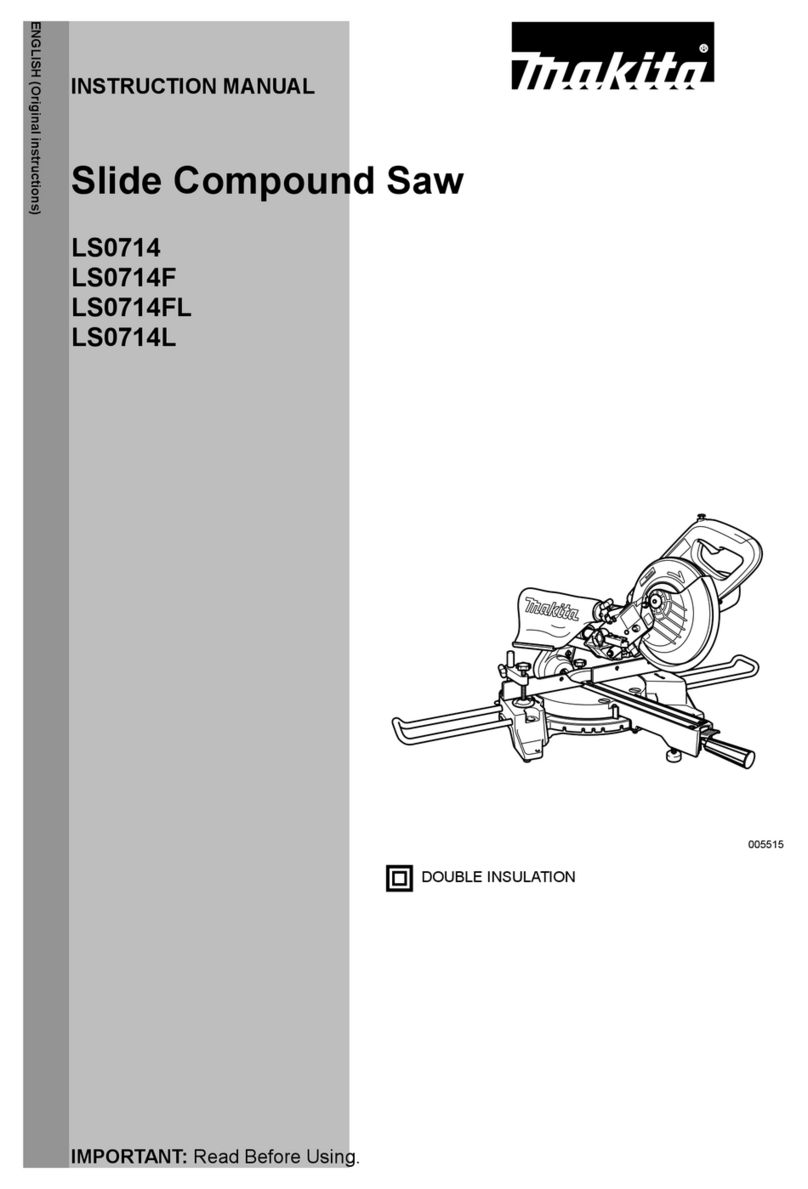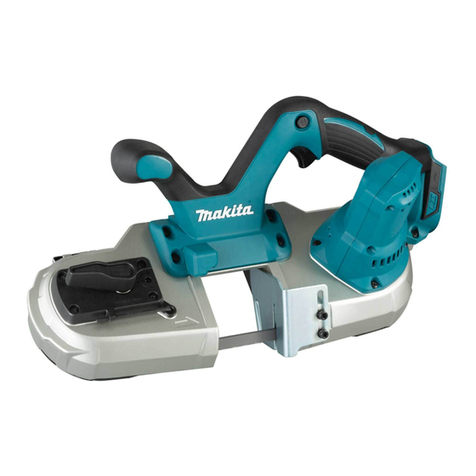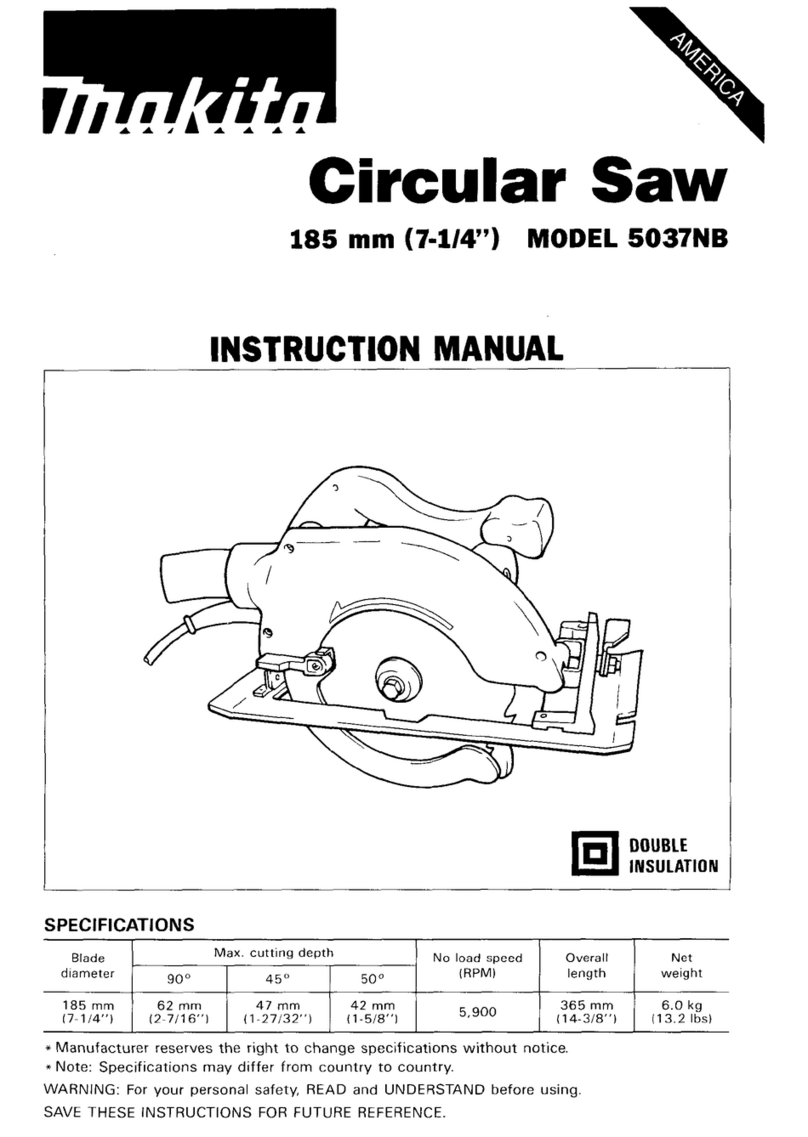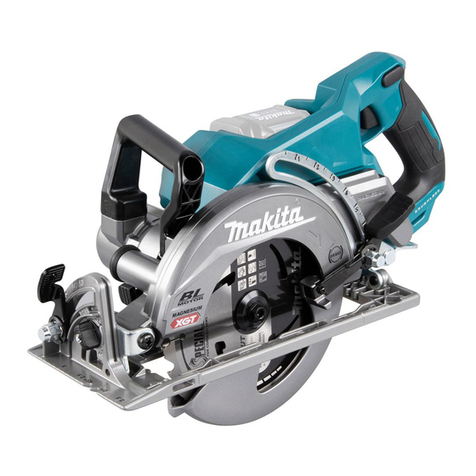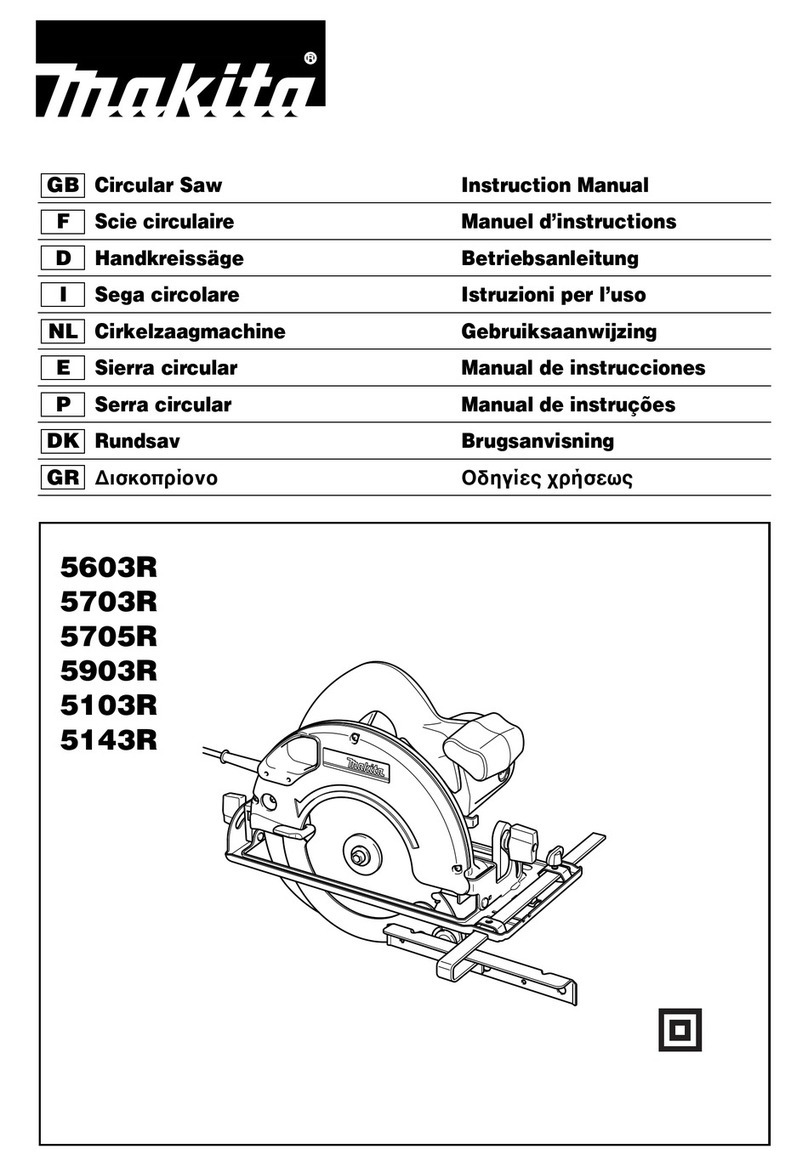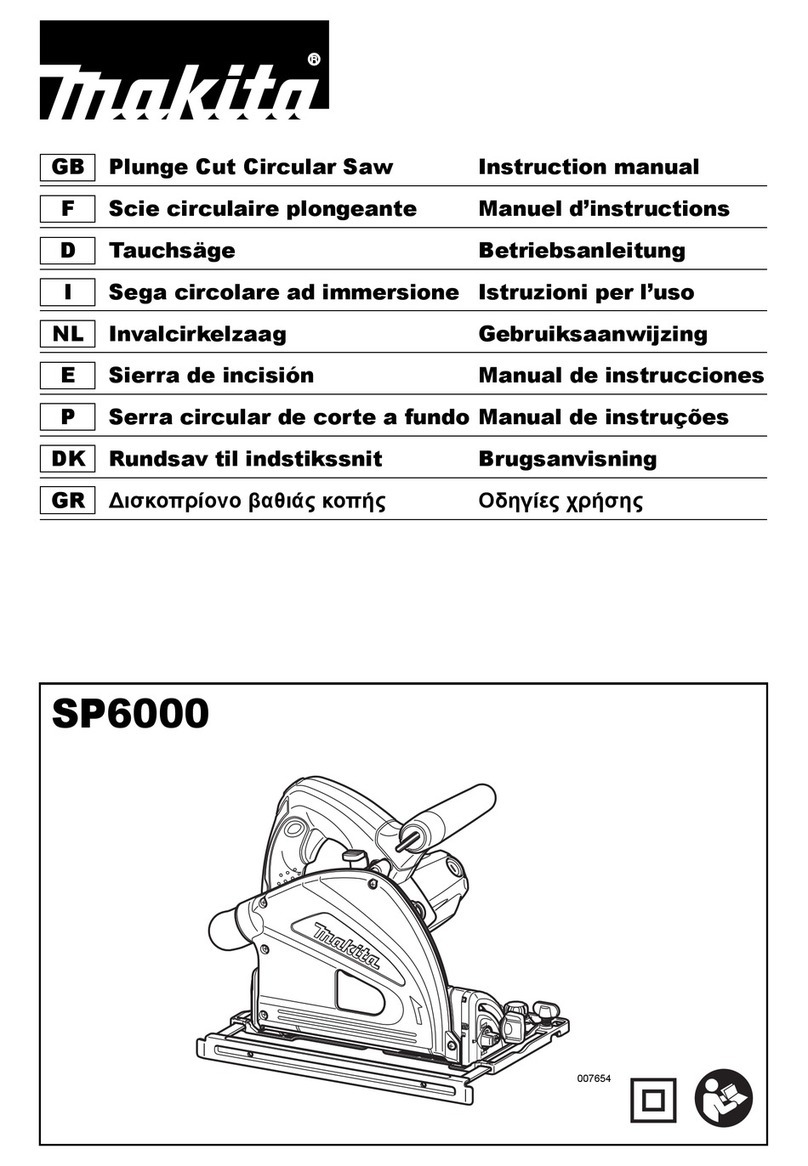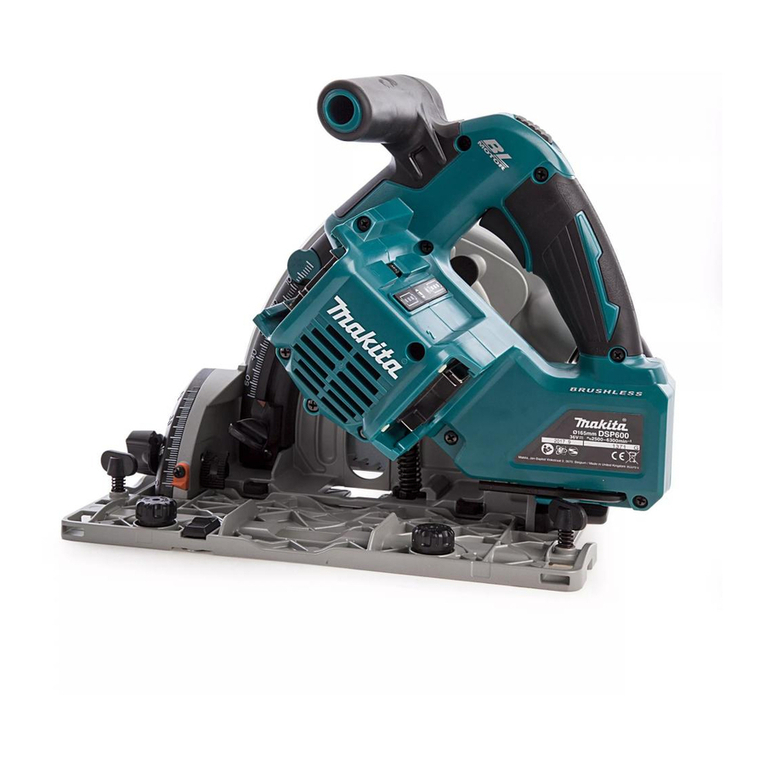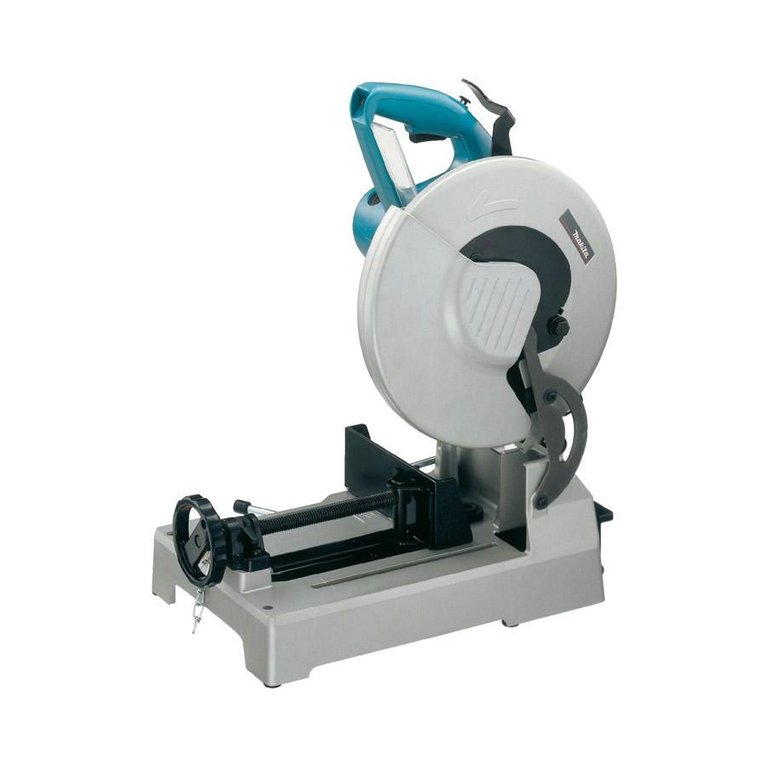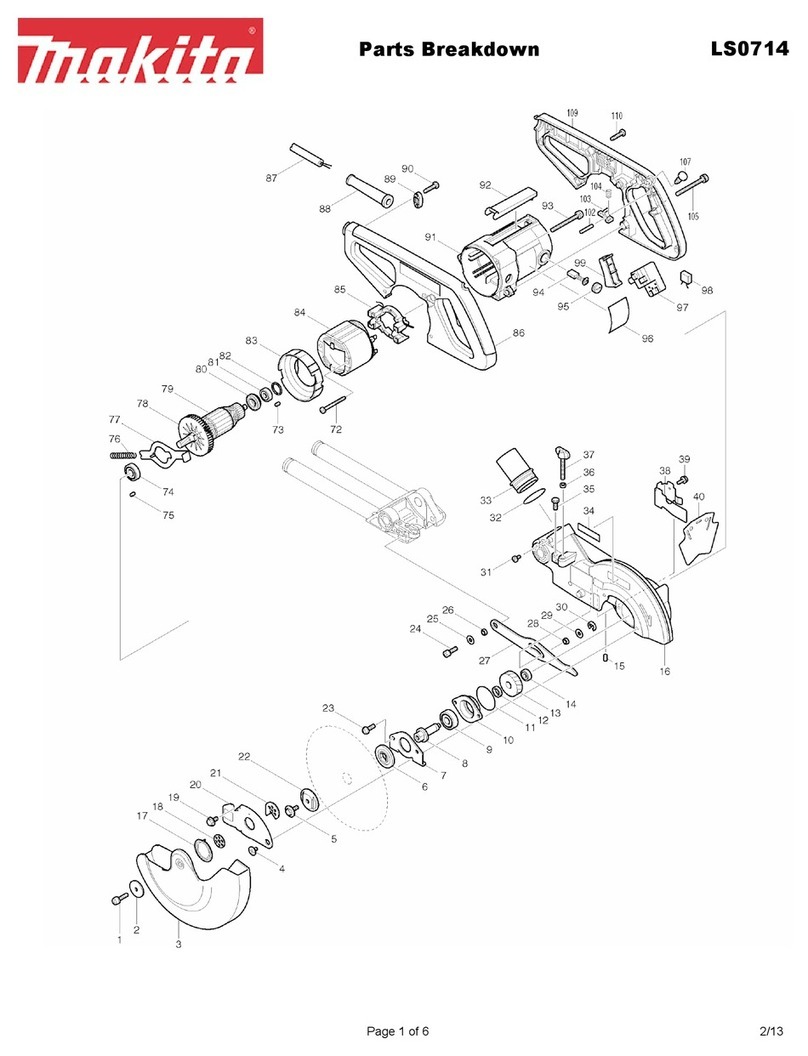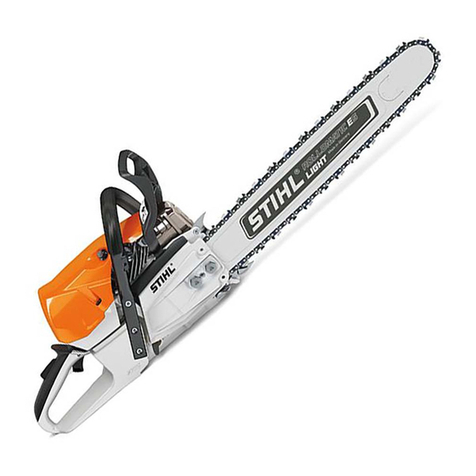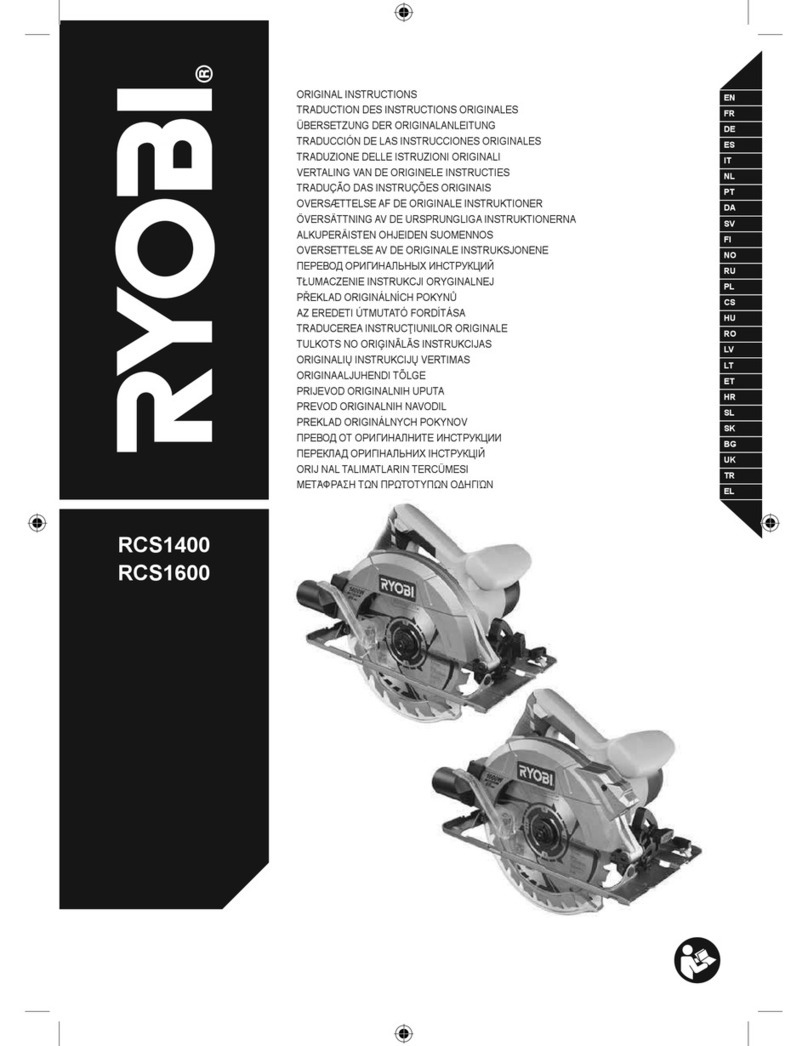4
10. Secure the work.
Use clamps or a vice to hold the work. It is safer
than using your hand and it frees both hands to
operate the tool.
11. Do not overreach.
Keep proper footing and balance at all times.
12. Maintain tools with care.
Keep cutting tools sharp and clean for better and
safer performance. Follow instructions for
lubrication and changing accessories. Inspect tool
periodically and if damaged have repaired by an
authorized service facility. Keep handles dry, clean
and free from oil and grease.
13. Disconnect tools.
Where the design permits, disconnect the tool
from its battery pack when not in use, before
servicing and when changing accessories such as
blades, bits and cutters.
14. Remove adjusting keys and wrenches.
Form the habit of checking to see that keys and
adjusting wrenches are removed from the tool
before turning it on.
15. Avoid unintentional starting.
Do not carry the tool with a finger on the switch.
16. Stay alert.
Watch what you are doing. Use common sense.
Do not operate tool when you are tired.
17. Check damaged parts.
Before further use of the tool, a guard or other part that
is damaged should be carefully checked to determine
that it will operate properly and perform its intended
function. Check for alignment of moving parts, free
running of moving parts, breakage of parts, mounting
and any other conditions that may affect its operation.
A guard or other part that is damaged should be
properly repaired or replaced by an authorized service
center unless otherwise indicated in this instruction
manual. Have defective switches replaced by an
authorized service facility. Do not use the tool if the
switch does not turn it on and off.
18. Warning.
The use of any accessory or attachment, other than
recommended in this instruction manual or the catalog,
may present a risk of personal injury.
Ensure that the battery pack is correct for the tool.
Ensure that the outside surface of battery pack or tool
is clean and dry before plugging into charger.
Ensure that batteries are charged using the correct
charger recommended by the manufacturer. Incorrect
use may result in a risk of electric shock, overheating
or leakage of corrosive liquid from the battery.
19. Have your tool repaired by a qualified person.
This tool is constructed in accordance with the
relevant safety requirements. Repairs should only
be carried out by qualified persons using original
spare parts, otherwise this may result in
considerable danger to the user.
20. Disposal of battery.
Ensure battery is disposed of safely as instructed
by the manufacturer.
ENB118-2
ADDITIONAL SAFETY RULES
FOR TOOL
1. Wear eye protection.
2. Keep hands out of path of saw blade. Avoid
contact with any coasting blade. It can still
cause severe injury.
3.
Do not operate saw without guards in place.
Check blade guard for proper closing before each
use. Do not operate saw if blade guard does not
move freely and close instantly. Never clamp or tie
the blade guard into the open position.
4.
Do not perform any operation freehand.
The
workpiece must be secured firmly against the turn base
and guide fence with the vise during all operations.
Never use your hand to secure the workpiece.
5. Never reach around saw blade.
6.
Turn off tool and wait for saw blade to stop
before moving workpiece or changing settings.
7. Remove the battery cartridge before changing
blade or servicing.
8. Always secure all moving portions before
carrying the tool.
9. Stopper pin which locks the cutter head down
is for carrying and storage purposes only and
not for any cutting operations.
10.
Do not use the tool in the presence of
flammable liquids or gases.
The electrical
operation of the tool could create an explosion and
fire when exposed to flammable liquids or gases.
11. Check the blade carefully for cracks or
damage before operation.
Replace cracked or damaged blade immediately.
12. Use only flanges specified for this tool.
13.
Be careful not to damage the arbor, flanges
(especially the installing surface) or bolt. Damage to
these parts could result in blade breakage.
14. Make sure that the turn base is properly
secured so it will not move during operation.
15.
For your safety, remove the chips, small pieces,
etc. from the table top before operation.
16. Avoid cutting nails. Inspect for and remove all
nails from the workpiece before operation.
17. Make sure the shaft lock is released before the
switch is turned on.
18. Be sure that the blade does not contact the
turn base in the lowest position.


